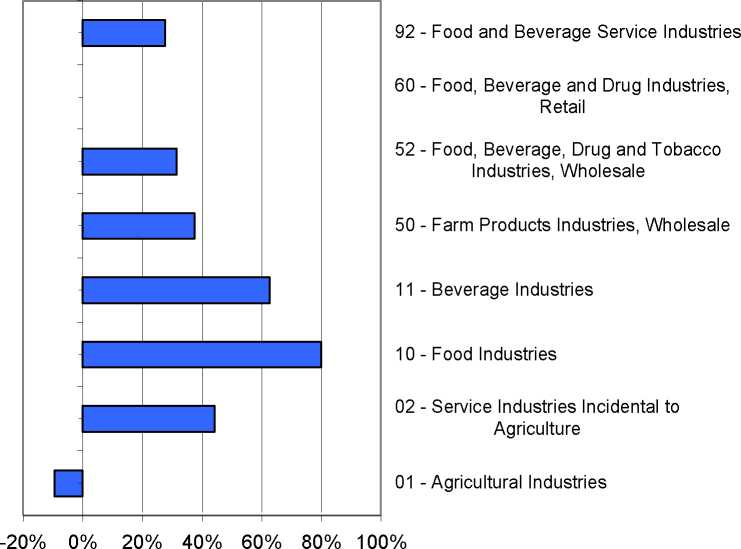Current Agriculture, Food & Resource Issues
D. Sparling and E. van Duren

Figure 12 Percent change in number of establishments in major Canadian agriculture
and food industries, 1991-1999
Source: Strategis Canada
Implications of Globalization and Concentration
Implications for Business Managers
Global Opportunities and Competition
As the rate and extent of globalization increases and mergers and acquisitions change
the nature of the competition, managers must plot their courses in an increasingly
complex environment. The principal message for agri-food managers is that constant
environmental scanning will be essential to identify both the opportunities and threats
resulting from globalization and concentration. Foreign markets present new market and
sourcing options as well as opportunities for acquiring new products to offer to a firm’s
existing customer base. By the same token, competition may come from competitors who
were previously not involved in the markets, due either to geographic separation or to the
fact that their business was not traditionally focused on agri-food markets. As agri-food
markets become a place for new competitors to deploy their non-agri-food competencies,
they can change the nature of competition in the agri-food sector. For agri-food managers,
developing core competencies by looking inward at firm capabilities is important, but
44
More intriguing information
1. Knowledge, Innovation and Agglomeration - regionalized multiple indicators and evidence from Brazil2. EU enlargement and environmental policy
3. Getting the practical teaching element right: A guide for literacy, numeracy and ESOL teacher educators
4. The name is absent
5. The name is absent
6. Langfristige Wachstumsaussichten der ukrainischen Wirtschaft : Potenziale und Barrieren
7. The name is absent
8. Olive Tree Farming in Jaen: Situation With the New Cap and Comparison With the Province Income Per Capita.
9. Optimal Taxation of Capital Income in Models with Endogenous Fertility
10. Assessing Economic Complexity with Input-Output Based Measures